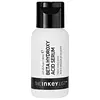What's inside
What's inside
 Key Ingredients
Key Ingredients

 Benefits
Benefits

 Concerns
Concerns

 Ingredients Side-by-side
Ingredients Side-by-side

Water
Skin ConditioningGlycerin
HumectantGlycolic Acid
BufferingButylene Glycol
HumectantLactic Acid
BufferingSodium Hydroxide
BufferingXanthan Gum
EmulsifyingHydrolyzed Linseed Extract
Skin ConditioningHydroxyethylcellulose
Emulsion StabilisingSodium Benzoate
MaskingHydroxyethylpiperazine Ethane Sulfonic Acid
BufferingHexylene Glycol
EmulsifyingStephania Tetrandra Root Extract
Skin ConditioningVitis Vinifera Seed Extract
AntimicrobialDisodium EDTA
Sodium Acetate
BufferingIsopropyl Alcohol
SolventWater, Glycerin, Glycolic Acid, Butylene Glycol, Lactic Acid, Sodium Hydroxide, Xanthan Gum, Hydrolyzed Linseed Extract, Hydroxyethylcellulose, Sodium Benzoate, Hydroxyethylpiperazine Ethane Sulfonic Acid, Hexylene Glycol, Stephania Tetrandra Root Extract, Vitis Vinifera Seed Extract, Disodium EDTA, Sodium Acetate, Isopropyl Alcohol
 Reviews
Reviews

Ingredients Explained
These ingredients are found in both products.
Ingredients higher up in an ingredient list are typically present in a larger amount.
Hydroxyethylcellulose is used to improve the texture of products. It is created from a chemical reaction involving ethylene oxide and alkali-cellulose. Cellulose is a sugar found in plant cell walls and help give plants structure.
This ingredient helps stabilize products by preventing ingredients from separating. It can also help thicken the texture of a product.
This ingredient can also be found in pill medicines to help our bodies digest other ingredients.
Learn more about HydroxyethylcelluloseSodium Hydroxide is also known as lye or caustic soda. It is used to adjust the pH of products; many ingredients require a specific pH to be effective.
In small amounts, sodium hydroxide is considered safe to use. However, large amounts may cause chemical burns due to its high alkaline.
Your skin has a natural pH and acid mantle. This acid mantle helps prevent harmful bacteria from breaking through. The acid mantle also helps keep your skin hydrated.
"Alkaline" refers to a high pH level. A low pH level would be considered acidic.
Learn more about Sodium HydroxideWater. It's the most common cosmetic ingredient of all. You'll usually see it at the top of ingredient lists, meaning that it makes up the largest part of the product.
So why is it so popular? Water most often acts as a solvent - this means that it helps dissolve other ingredients into the formulation.
You'll also recognize water as that liquid we all need to stay alive. If you see this, drink a glass of water. Stay hydrated!
Learn more about Water